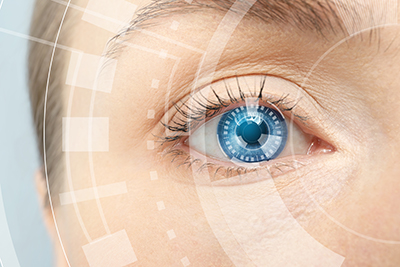
The field of ophthalmology has enjoyed some exciting advances in recent years thanks to the contributions of doctors to new technologies. One such technology is machine vision. From assisting with laser eye surgery to helping blind persons see again, machine vision is changing lives for the better.
Ophthalmology and Machine Vision
Machine vision gives automated computer systems the ability to see. This makes it possible for doctors, scientists, and engineers to create new exam tools, imaging diagnostics, and even devices that can replace natural vision. Machine vision combined with deep learning to make imaging and diagnosis less expensive and more accessible.
Embedded vision is being used for conditions like dry eye disease. Detection of segmentation within the dendritic cells is a non-invasive and responsive biomarker to determine the severity of related corneal inflammation. By pairing vivo confocal microscopy with deep learning, diagnosis and treatment accuracy have been improved.
Advancements in Machine Vision and Ophthalmology
Improving current technology is a major goal of many doctors and scientists. The tools that you’ve seen at your local eye doctors are seeing major changes to make them easier to use, less invasive, and more accurate. Smarter tools are helping doctors to diagnose problems earlier and better treat eye conditions and diseases. Here are some of the cutting-edge advancements.
Corneal pachymetry is used to measure the thickness of the cornea with an ultrasonic device. The device is brought into contact with the eye’s surface. It helps to diagnose cornea disease and to help prepare for eye surgeries. The glaucoma optic nerve head analyzer is another recent improvement. The device creates diagnostic quality images of the optic nerve and determine if there is damage due to glaucoma.
By means of a handheld ultrasonic device, A-scan immersion ultrasound measures the length of the eye look for masses within the eye. Newer scanners can even perform the diagnosis without making physical contact with the eye. B-scan ultrasound is used to find out detailed information about the inner structures of the eye. The images can be used to find problems related to the retina, sclera, orbit, vitreous, and lens.
Future of Ophthalmology and Machine Vision
The future of machine vision and ophthalmology is bright. In the case of glaucoma patients, scientists hope to develop a neural network that will improve disease detection even further. Machine vision will help to detect even the slightest changes and progressive damage to the optic nerve. Current treatments will be improved to avoid risky invasive surgeries in the future.
One challenge to ophthalmology is that current AI screen systems use two-dimensional images and lack stereoscopic qualities. Technologies like fluorescein angiography, fundus photography, and optical coherence tomography angiography are boosting the quality of the dataset. By using machine vision with multimodal imaging in future AI algorithms will help to vastly improve AI-based screening.
Let the experts at Phase 1 Technology help you find the right camera for your machine vision application.

